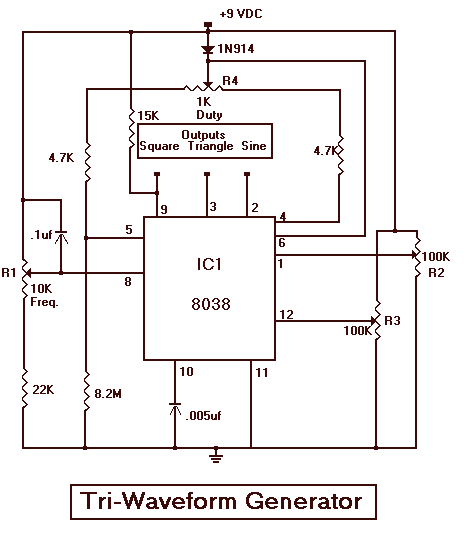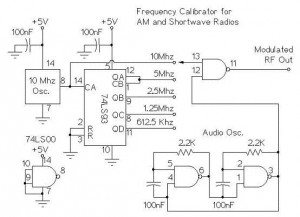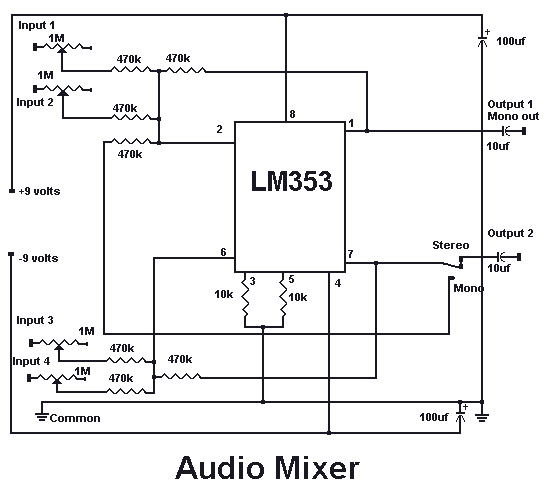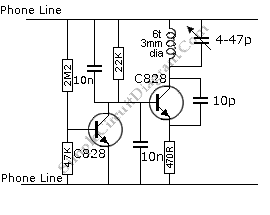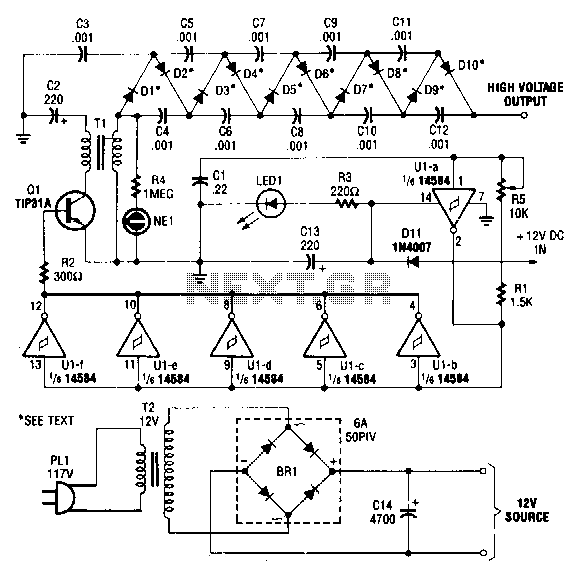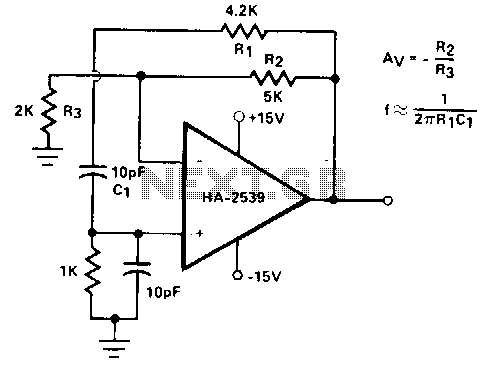
Line frequency square-wave generator
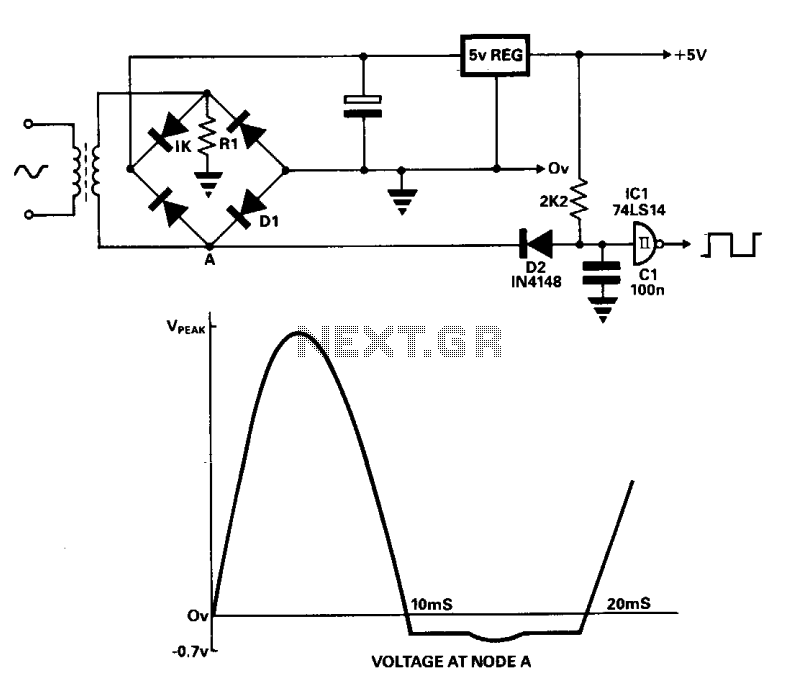
A line frequency square wave with a 1:1 duty cycle can be generated using only three components and a buffer from the power supply. During the alternate half-cycle, point A is clamped to approximately -0.7 V by diode D1 in the bridge, which offsets the forward voltage across diode D2, resulting in an input to integrated circuit IC1 of about 0 V. When point A rises above +5 V, diode D2 becomes reverse biased and remains at +5 V. Resistor R1 is necessary to load the transformer secondary, ensuring a distortion-free waveform at point A while the diode bridge is not conducting. Capacitor C1, although not essential, may be included to eliminate transients.
The circuit described utilizes a minimal number of components to produce a reliable square wave output. The fundamental operation relies on the interaction between the diodes in the bridge configuration, which effectively manage the voltage levels at point A. During the positive half-cycle of the input AC signal, diode D1 conducts, allowing current to flow and charging point A. The clamping action of D1, which limits the voltage to approximately -0.7 V, ensures that the output remains within a defined range, preventing damage to the connected components and maintaining signal integrity.
In the negative half-cycle, diode D2 becomes reverse biased when point A rises above +5 V, effectively isolating the output from the input voltage fluctuations. This action stabilizes the voltage at point A, allowing the integrated circuit IC1 to operate within its specified input range. The resistor R1 serves a critical role in loading the transformer secondary, which is essential for maintaining the desired waveform characteristics. By providing a load, R1 helps to prevent waveform distortion that could occur when the diode bridge is not conducting.
Capacitor C1 acts as a transient filter, smoothing out any rapid voltage changes that may occur during switching events. While its inclusion is not mandatory for basic operation, it can enhance the performance of the circuit by reducing noise and providing a cleaner output signal. The careful selection of components and their configuration within the circuit allows for the generation of a stable square wave output suitable for various applications, including signal processing and timing circuits. This design exemplifies the efficiency of simple electronic circuits in achieving complex functionalities with minimal resources.With only three components and a buffer, a line frequency square wave having a 1:1 duty cycle may be derived from the power supply. During the alternate half-cycle, however, A is effectively clamped to - 0.7 V by Dl in the bridge which offsets the forward voltage across D2 giving an input to IC1 of approximately 0 V.
When A rises above + 5 V, D2 is reverse biased and remains at +5 V. Rl is needed to load the transformer secondary maintaining a distortion-free waveform at A during the time the diode bridge is not conducting. Cl although not essential may be required to remove transients. 🔗 External reference
The circuit described utilizes a minimal number of components to produce a reliable square wave output. The fundamental operation relies on the interaction between the diodes in the bridge configuration, which effectively manage the voltage levels at point A. During the positive half-cycle of the input AC signal, diode D1 conducts, allowing current to flow and charging point A. The clamping action of D1, which limits the voltage to approximately -0.7 V, ensures that the output remains within a defined range, preventing damage to the connected components and maintaining signal integrity.
In the negative half-cycle, diode D2 becomes reverse biased when point A rises above +5 V, effectively isolating the output from the input voltage fluctuations. This action stabilizes the voltage at point A, allowing the integrated circuit IC1 to operate within its specified input range. The resistor R1 serves a critical role in loading the transformer secondary, which is essential for maintaining the desired waveform characteristics. By providing a load, R1 helps to prevent waveform distortion that could occur when the diode bridge is not conducting.
Capacitor C1 acts as a transient filter, smoothing out any rapid voltage changes that may occur during switching events. While its inclusion is not mandatory for basic operation, it can enhance the performance of the circuit by reducing noise and providing a cleaner output signal. The careful selection of components and their configuration within the circuit allows for the generation of a stable square wave output suitable for various applications, including signal processing and timing circuits. This design exemplifies the efficiency of simple electronic circuits in achieving complex functionalities with minimal resources.With only three components and a buffer, a line frequency square wave having a 1:1 duty cycle may be derived from the power supply. During the alternate half-cycle, however, A is effectively clamped to - 0.7 V by Dl in the bridge which offsets the forward voltage across D2 giving an input to IC1 of approximately 0 V.
When A rises above + 5 V, D2 is reverse biased and remains at +5 V. Rl is needed to load the transformer secondary maintaining a distortion-free waveform at A during the time the diode bridge is not conducting. Cl although not essential may be required to remove transients. 🔗 External reference
